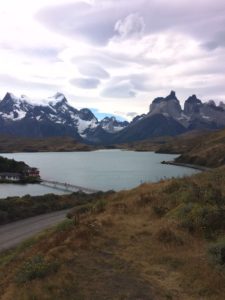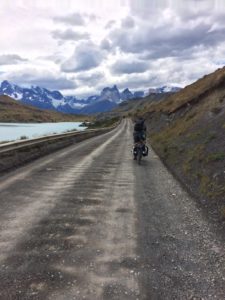 I was talking to my (recently returned) son, Juan Pablo, over the weekend, and was glad to hear that a far as people in the Patagonia (Chile and Argentina) are concerned, things are pretty much going same as always, and that most people’s basket of worries are allocated between family, friends, and daily living in their immediate surroundings: how they are doing, what they are up to, who had a baby, what kid did what in school, changing conditions of the road, wind speeds, and the price of Coca-Cola, seemed to be the main issues in any discussion.
I was talking to my (recently returned) son, Juan Pablo, over the weekend, and was glad to hear that a far as people in the Patagonia (Chile and Argentina) are concerned, things are pretty much going same as always, and that most people’s basket of worries are allocated between family, friends, and daily living in their immediate surroundings: how they are doing, what they are up to, who had a baby, what kid did what in school, changing conditions of the road, wind speeds, and the price of Coca-Cola, seemed to be the main issues in any discussion.
It’s hard to get teachers down there, as a result, the few dedicated souls that go there to teach, usually for a few years, are very much appreciated, paid well, and treated like royalty. Everywhere one goes, be it over water or gravel, is a long way, and it’s wide open country in any direction, with lots of rain, cold, and wind. Always the wind. We’re talking the literal end of the road here, the southernmost city in the world (their claim), Ushuaia, Argentina, only 200 miles to the south-east, as the crow flies—more like 800 miles by road. Because of the wind and cold, not many trees (see picture), so nothing to cut the wind. All roads outside of town are gravel, traveled at 10 to 15 mph in a vehicle, or a bike, makes no difference, and slower in trucks, largely due to the canoed surface (see picture). This is a place where supplies don’t so much arrive by long-haul truck as disembark—the reason a can of coke is $5 bucks, a kilo of mutton chops $0.50.
 Life, in Tierra del Fuego, is mainly an indoor sport, even though the “lugareños” consider one hour outside equal to ten “for the wimps up north.” By “up north” they mean 1000 miles further north, which suggests the vicinity of Valdivia; a town considered to be “southern Chile” anywhere else.
Life, in Tierra del Fuego, is mainly an indoor sport, even though the “lugareños” consider one hour outside equal to ten “for the wimps up north.” By “up north” they mean 1000 miles further north, which suggests the vicinity of Valdivia; a town considered to be “southern Chile” anywhere else.
School is taught the same way it has always being taught, meaning a class with a chalkboard, inside a wood frame building with a metal roof. The desks, wooden and ancient, the textbooks not having changed in fifty years are typically shared by several students. The wind hasn’t changed either. Average wind speed hovers around 20 kts. (x 1.15 for mph.). People there understand averages, and go around with raised eyebrows during calm periods, especially if the calm persists for more than half a day. Because of the wind, small kids do not play outside without adult supervision. Every so often an adult returning home with a child realizes he has a kite by the hand instead. It’s serious wind, and a serious life.
I, for one, like knowing of people that live the day, worry about each other, about things they can control, admire teachers, teach their kids with good ol’ textbooks, find no need to change old wooden desks, appreciate the calm before the storm, probably eat lots of mutton, drink less cokes, and understand averages.
mt

